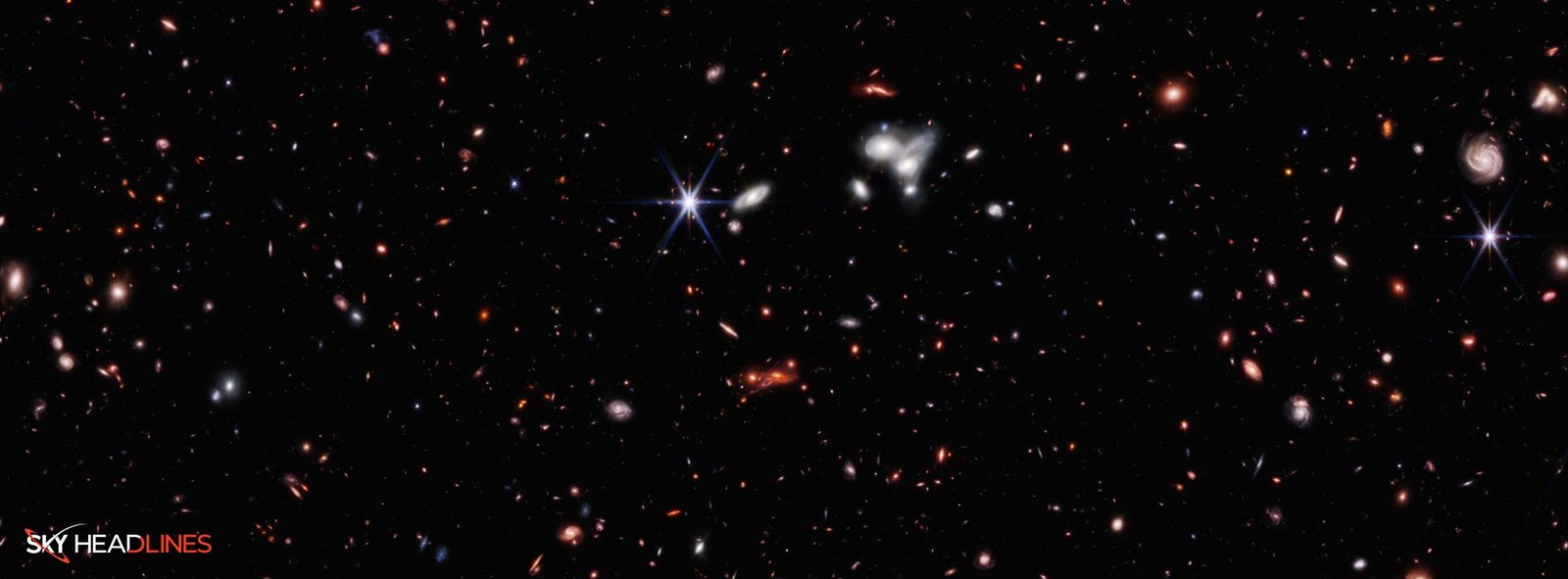Located in the galaxy CEERS 1019, this black hole existed slightly over 570 million years after the big bang. Scientists using the James Webb Space Telescope have made a groundbreaking discovery by finding the most distant live supermassive black hole.
How did researchers make the discoveries like black holes in CEERS 1019?
What makes it remarkable is its relatively small size compared to other black holes in the early universe. Typically, these giants have masses billions of times greater than the Sun and are easily detectable due to their size and brightness. In contrast, the black hole in CEERS 1019 is comparable in mass to the one at the center of our Milky Way galaxy, weighing about 9 million times that of the Sun.

The researchers leading the Cosmic Evolution Early Release Science (CEERS) Survey, headed by Steven Finkelstein from the University of Texas at Austin, utilized the James Webb Telescope’s detailed near- and mid-infrared images and spectra to make these findings. They could distinguish the spectral emissions originating from the black hole and its host galaxy, measure the black hole’s gas consumption, and assess the star formation rate in the universe.
Insights from the CEERS 1019 Survey and James Webb Telescope: Discoveries of multiple black holes
The team discovered that CEERS 1019’s galaxy is simultaneously accreting gas and forming stars. Analyzing the images, they noticed that the universe appeared as three distinct bright clusters rather than a single rounded disk. This structure suggests that a merger with another galaxy may influence the black hole’s activity, which could contribute to enhanced star formation.

Furthermore, the CEERS Survey yielded more intriguing results, including identifying two smaller black holes in the data. The first, located in galaxy CEERS 2782, was relatively easy to find since no obscuring dust blocked the telescope’s view. It existed only 1.1 billion years after the big bang. The second black hole, situated in galaxy CEERS 746, was approximately 1 billion years old and had some dust surrounding its bright accretion disk. Dust indicates that the universe may also be undergoing rapid star formation.
Lightweight Supermassive Black Holes: Detailed Overview of CEERS 1019 Survey
These two newly discovered black holes, like the one in CEERS 1019, are considered “lightweights” compared to other supermassive black holes found at similar distances, about 10 million times the mass of the Sun. Before the James Webb Telescope, these black holes could not be observed since they appeared as typical star-forming galaxies using other telescopes.
Additionally, by measuring the distance of galaxies observed by the Webb Telescope, researchers Pablo Arrabal Haro from the National Science Foundation’s NOIRLab and Seiji Fujimoto from the University of Texas at Austin determined the ages of 11 galaxies that existed between 470 and 675 million years after the big bang. It is noteworthy that these galaxies displayed significant brightness despite being far away. This finding challenges previous expectations that Webb would detect fewer galaxies compared to existing knowledge about galaxies at similar distances. The detailed spectra obtained from these galaxies, along with potential future discoveries, could revolutionize our understanding of star formation and the evolution of galaxies over time.
CEERS Survey and James Webb Telescope Challenge Theoretical Models of Early Universe Objects
The CEERS 1019 Survey has provided invaluable insights beyond expectations. Previously, knowledge about objects in the early universe relied heavily on theoretical models. However, with the capabilities of the James Webb Telescope, scientists can now directly observe and accurately measure black holes and galaxies in the early universe. This breakthrough opens up new opportunities to investigate the formation of early black holes, potentially requiring a revision of existing models that describe their growth and evolution during the initial stages of the universe.





